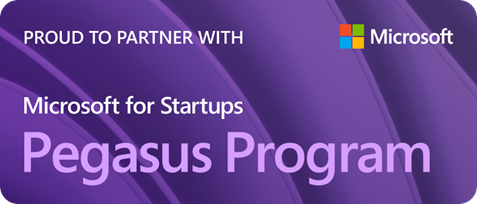The Profit Paradox: How Start Left Methodologies Transform Cybersecurity into a Profit Center
For decades, cybersecurity has been viewed as a cost center—an unavoidable yet necessary expense. Security was often seen as the department that says "no," adding layers of complexity and slowing down innovation. However, the paradigm shift toward "Start Left" methodologies is turning this traditional view on its head. For the first time ever, security can be transformed into a profit center by enhancing development and product teams' performance, reducing costs, and driving better business outcomes.
The Problem with Traditional Cybersecurity Approaches
Traditional cybersecurity practices—whether reactive, "shift-left," or focused on runtime protection—have historically added costs. They have relied on buying more tools and applying more manual processes to find and patch vulnerabilities after code is written. This results in high inefficiency, technical debt, and security debt.
While these methods might prevent breaches or compliance issues, they fail to align with business goals, such as improving software development velocity, quality, and overall product performance. The introduction of too many tools, siloed responsibilities, and delayed security testing slow development cycles, increase costs, and lead to future rework, commonly known as technical debt.
The Paradigm Shift: Start Left Methodologies
Start left methodologies reverse this traditional model by embedding security into every phase of the product development lifecycle—from day one. The focus shifts to proactively building high-quality, secure-by-design software by aligning development and security teams from the start.
By shifting to product-centric security, Start Left® empowers teams to take accountability for security, integrate continuous monitoring and real-time feedback, and develop high-quality software without bottlenecks. This shift significantly improves product and team performance, leading to faster release cycles and increased innovation.
Turning Security into a Profit Center
So, how does Start Left® turn security into a profit center? Here’s how:
1. Improved Productivity = Reduced Costs Today
When security is built into development from the start, product and engineering teams become more efficient. Security becomes a value-adding part of the workflow, not an afterthought or obstacle. Developers receive actionable insights in real-time, making security part of their job without disrupting their day-to-day work. This results in fewer vulnerabilities created, faster fixes, and less downtime, which accelerates product delivery.
2. Reduced Future Costs of Technical and Security Debt
Technical debt is the hidden cost of taking shortcuts or neglecting quality, which results in costly rework later. Security debt, similarly, is the cost of ignoring security early in the development process, leaving products vulnerable to attacks or compliance issues.
Start Left® mitigates both types of debt by ensuring that code is clean, secure, and well-architected from the start. By reducing the number of vulnerabilities and security issues introduced during development, organizations avoid the massive costs of rework, security patches, and incident response down the road.
3. Consolidating Security Tools to Save Costs
Traditional cybersecurity approaches often lead to an overwhelming number of security tools that must be integrated, managed, and maintained. Each tool comes with its own cost—both in terms of licensing fees and operational overhead.
Start Left® eliminates the need for many of these tools by providing a comprehensive platform that covers multiple aspects of security. The tools and processes consolidated or avoided include:
- Software Composition Analysis (SCA): Reduces the need for external SCA tools by integrating open-source vulnerability scanning directly into the CI/CD pipeline.
- Static Application Security Testing (SAST): Eliminates standalone SAST tools by embedding scanning into code development with real-time feedback.
- Dynamic Application Security Testing (DAST): Replaces or augments traditional DAST tools by providing integrated testing for web applications within the development lifecycle.
- Infrastructure-as-Code (IaC) Security: Avoids the need for specialized IaC security tools by scanning configurations for vulnerabilities and compliance issues from the start.
- Container Security: Reduces or consolidates container security tools by offering integrated container image scanning and SBOM generation, ensuring containerized environments are secure before deployment.
- Cloud Security Posture Management (CSPM): Start Left® consolidates many CSPM functions by embedding secure-by-design principles and continuous monitoring for cloud environments within the same platform.
By consolidating and unifying these tools under one platform, Start Left® drastically lowers the costs of managing multiple vendor solutions, simplifies processes, and enables teams to work more efficiently.
4. Doing More with the Resources You Already Have: Upskilling Your Team
One of the biggest challenges for any organization is maximizing the potential of their existing workforce. With Start Left®, you can do exactly that by leveraging personalized, situational training and gamified learning paths. Instead of constantly seeking external talent or investing heavily in new tools, Start Left® helps you upskill your current teams, empowering them to take on more advanced security responsibilities without the need for extensive outside intervention.
Here's how Start Left® achieves this:
- Personalized Training: Every developer and team member receives tailored micro-training based on the specific vulnerabilities or security issues they encounter. This hands-on learning improves understanding and retention, enabling employees to learn in real-time and apply their new skills immediately.
- Situational Learning Paths: Rather than generic training, Start Left® delivers situational learning paths that are directly aligned with the security issues and risks that matter most to your organization. This approach ensures that teams are learning exactly what they need to solve your unique challenges.
- Gamified Upskilling: Learning isn’t just a chore with Start Left®; it’s incentivized through gamification, making the process engaging and motivating for your team. As employees develop new skills, they’re rewarded with badges, points, and recognition, keeping them engaged and continuously improving.
By focusing on upskilling your existing workforce, Start Left® helps companies do more with the resources they already have. This not only enhances team performance but also reduces the need for external hires, lowering costs and improving efficiency. Upskilling your team with Start Left® means you're getting more value out of your current employees, transforming your existing workforce into high-performing, security-conscious professionals who can handle the demands of modern software development.
The ROI of Upskilling
- Increased Team Efficiency: Empowering teams with relevant, real-time security knowledge allows them to work more effectively, reducing delays and improving security outcomes.
- Cost Savings: Upskilling reduces the need to hire additional security specialists, saving on recruitment and onboarding costs.
- Higher Retention Rates: Employees who feel continuously challenged and rewarded are more likely to stay with the company, reducing turnover and retaining institutional knowledge.
By doing more with the resources you already have, Start Left not only improves your security posture but also enhances operational efficiency, turning security into a profit driver through better utilization of your existing teams.
5. Avoiding Negative Outcomes
Start Left®’s proactive approach also helps organizations avoid the costly negative outcomes associated with traditional security practices, including:
- Data Breaches: Preventing breaches through secure-by-design development, eliminating the financial and reputational damage that can result from leaked customer or intellectual property data.
- Compliance Failures: Meeting regulatory standards (e.g., NIST, PCI, GDPR) and avoiding hefty fines by embedding compliance checks throughout the development lifecycle.
- Product Delays: Delivering products on time by reducing bottlenecks caused by rework, last-minute security fixes, or vulnerabilities introduced late in the development cycle.
- Alert Fatigue: Reducing noise and false positives by prioritizing actionable security risks, ensuring that teams focus on real issues rather than chasing irrelevant alerts.
Key Benefits of Start Left Methodologies:
- Higher Productivity: Developers receive real-time feedback, addressing security issues immediately rather than in retrospective audits.
- Lower Operational Costs: Consolidation of security tools reduces both CAPEX and OPEX, saving time and money while increasing efficiency.
- Future-Proof Development: Avoid security debt and technical debt, building secure, resilient software from the start.
- Risk Reduction: Prevent breaches and compliance failures through proactive, program-focused security.
- Faster Time-to-Market: Align security with development velocity, ensuring no delays in product release.
Conclusion: Security as a Competitive Advantage
Start left methodologies mark a major shift in how organizations approach security, transforming it from a costly burden into a profit-generating machine. By embedding security into the product development process, Start Left® aligns security with business goals, improves efficiency, reduces costs, and avoids future problems before they arise.
Security is no longer just about protecting your business—it’s about making your business better, faster, and more competitive.
If your organization is ready to turn security into a profit center, Start Left® Security is here to help.
SHARE!
More Resources
















